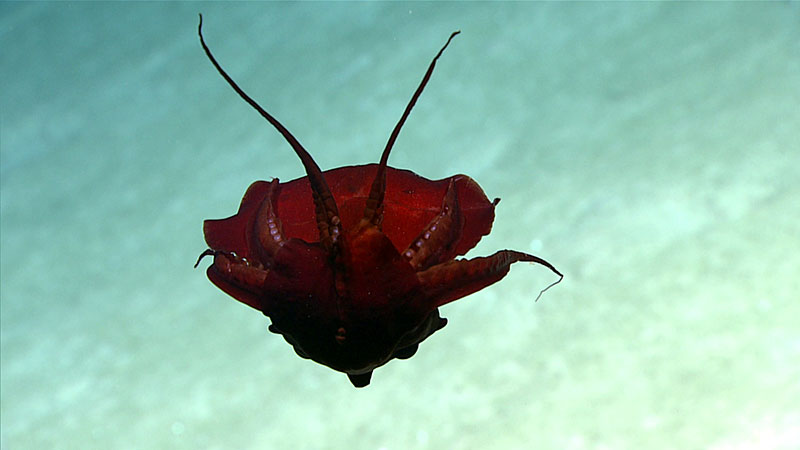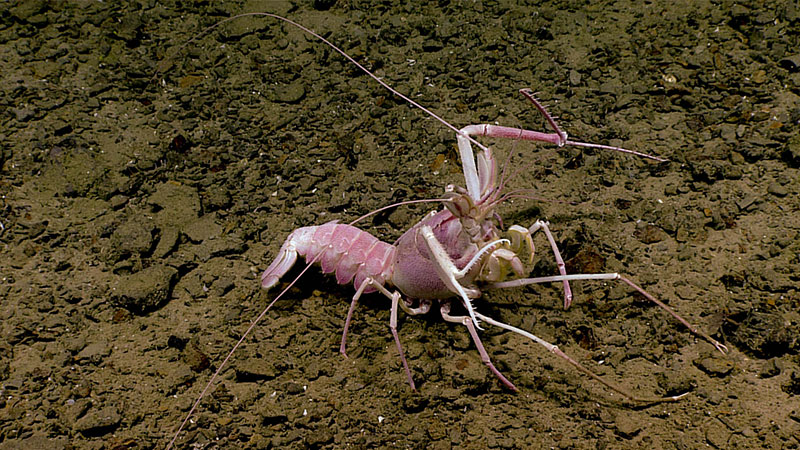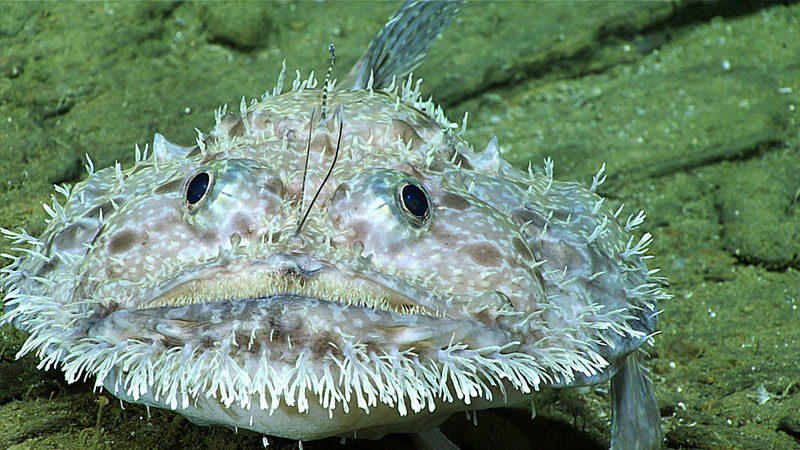-

When this currently unidentified squid (possibly Discoteuthis sp.) was observed, it appeared to be curled in upon itself with its arms folded in what may be a defensive posture. What appears to be the beak is visible towards the lower part of the center of the animal and is slightly lighter in color than the body. The behavior seen in this picture was described as “probably the most bizarre squid I’ve ever seen” by our cephalopod expert, Mike Vecchione. Image courtesy of the NOAA Office of Ocean Exploration and Research, Gulf of Mexico 2018. Download larger version (jpg, 836 KB).
-

This blind lobster (Acanthacaris caeca) was observed at ~675 meters (~2,215 feet). While we had gotten several images of these animals in burrows earlier in the dive, we found this lobster completely in the open close to the mound summit. The way it holds its pincers open is characteristic of this species. Image courtesy of the NOAA Office of Ocean Exploration and Research, Gulf of Mexico 2018. Download larger version (jpg, 1.4 MB).
-

A goosefish (Lophiodes beroe) was observed at ~640 meters (~2,100 feet). These fish are fairly common at about 600 - 800 meters (~1,970 - 2,625 feet) deep. A type of anglerfish, the lures are visible in the center of its face. Image courtesy of the NOAA Office of Ocean Exploration and Research, Gulf of Mexico 2018. Download larger version (jpg, 1.4 MB).